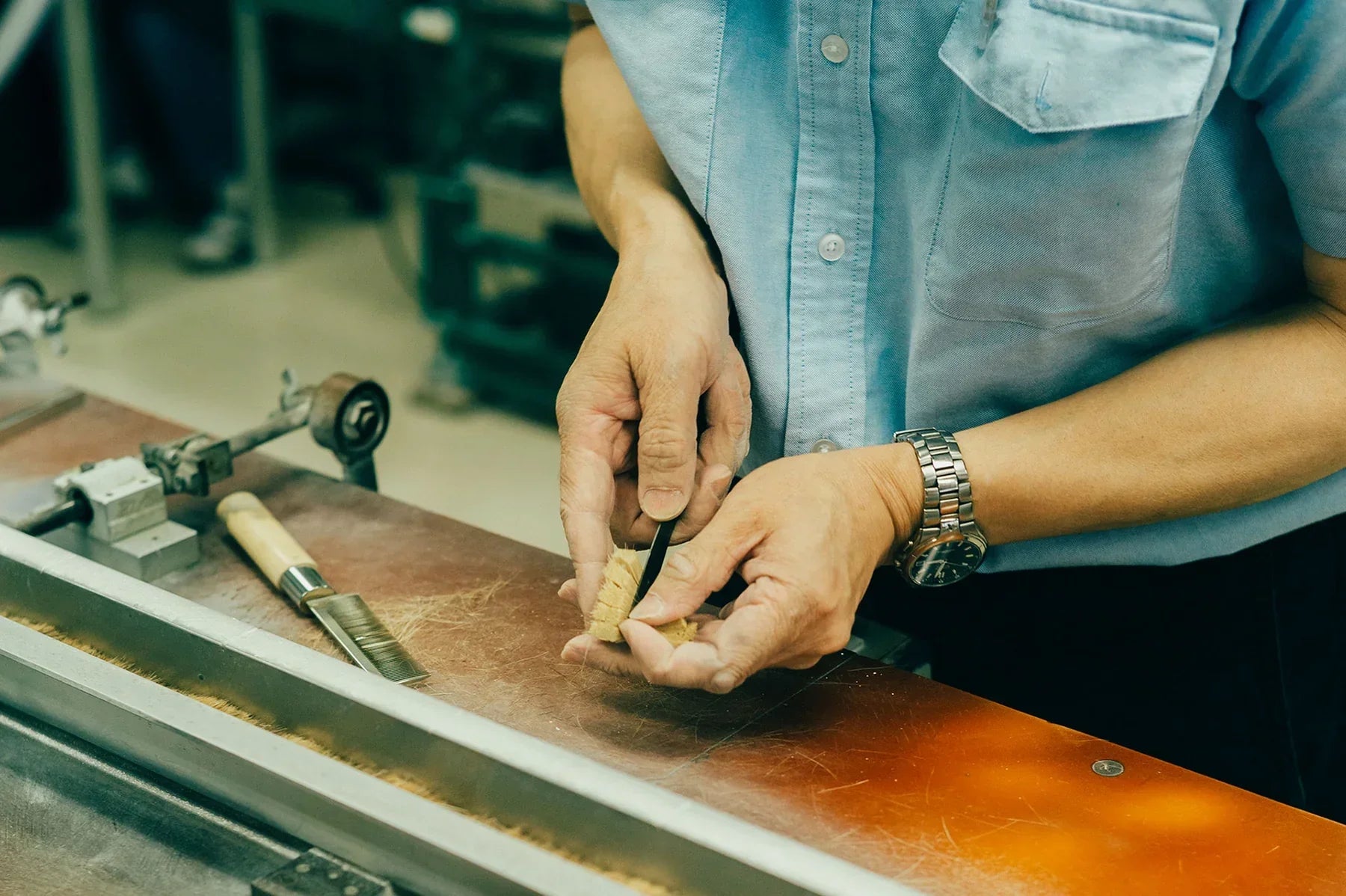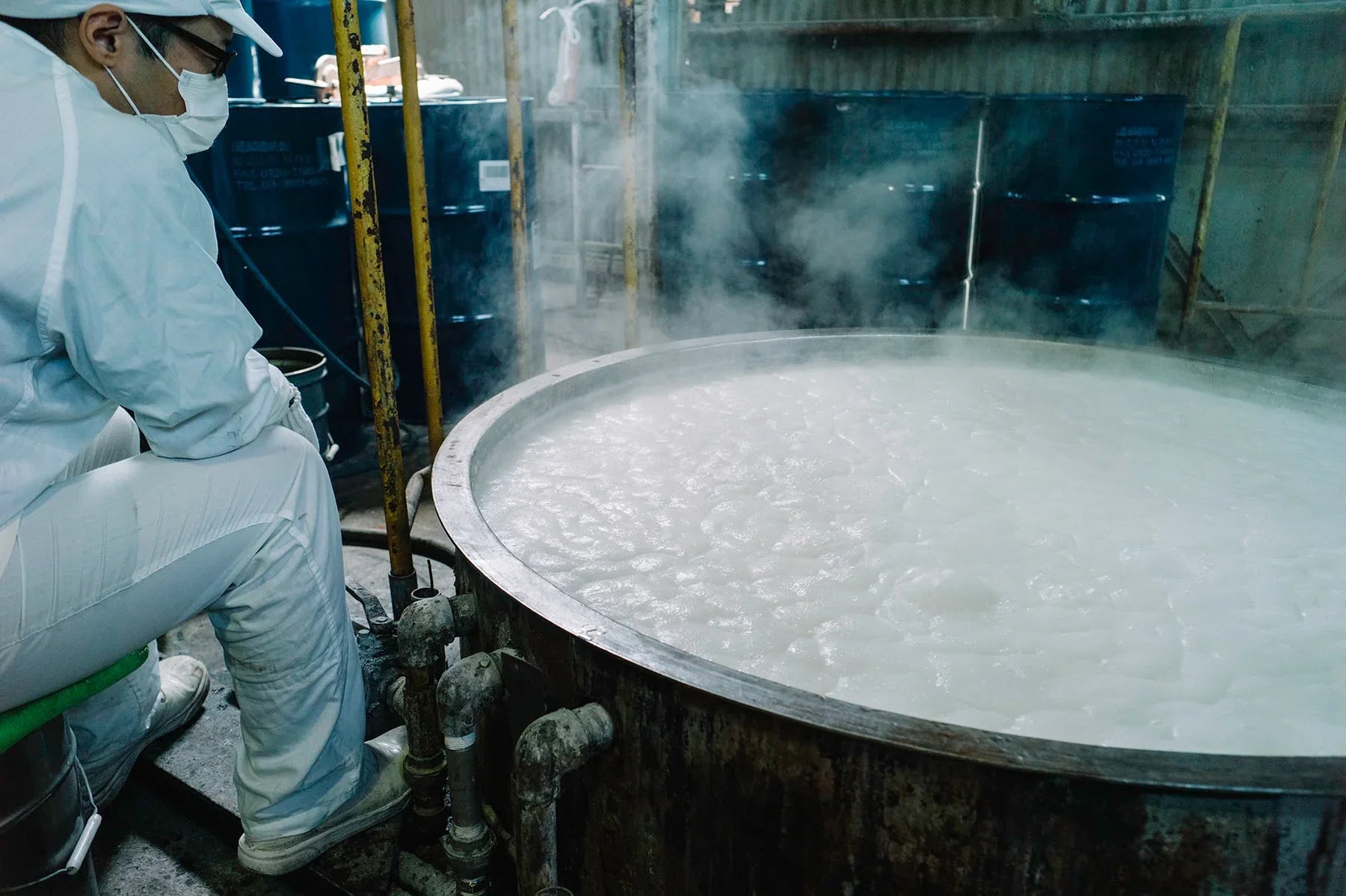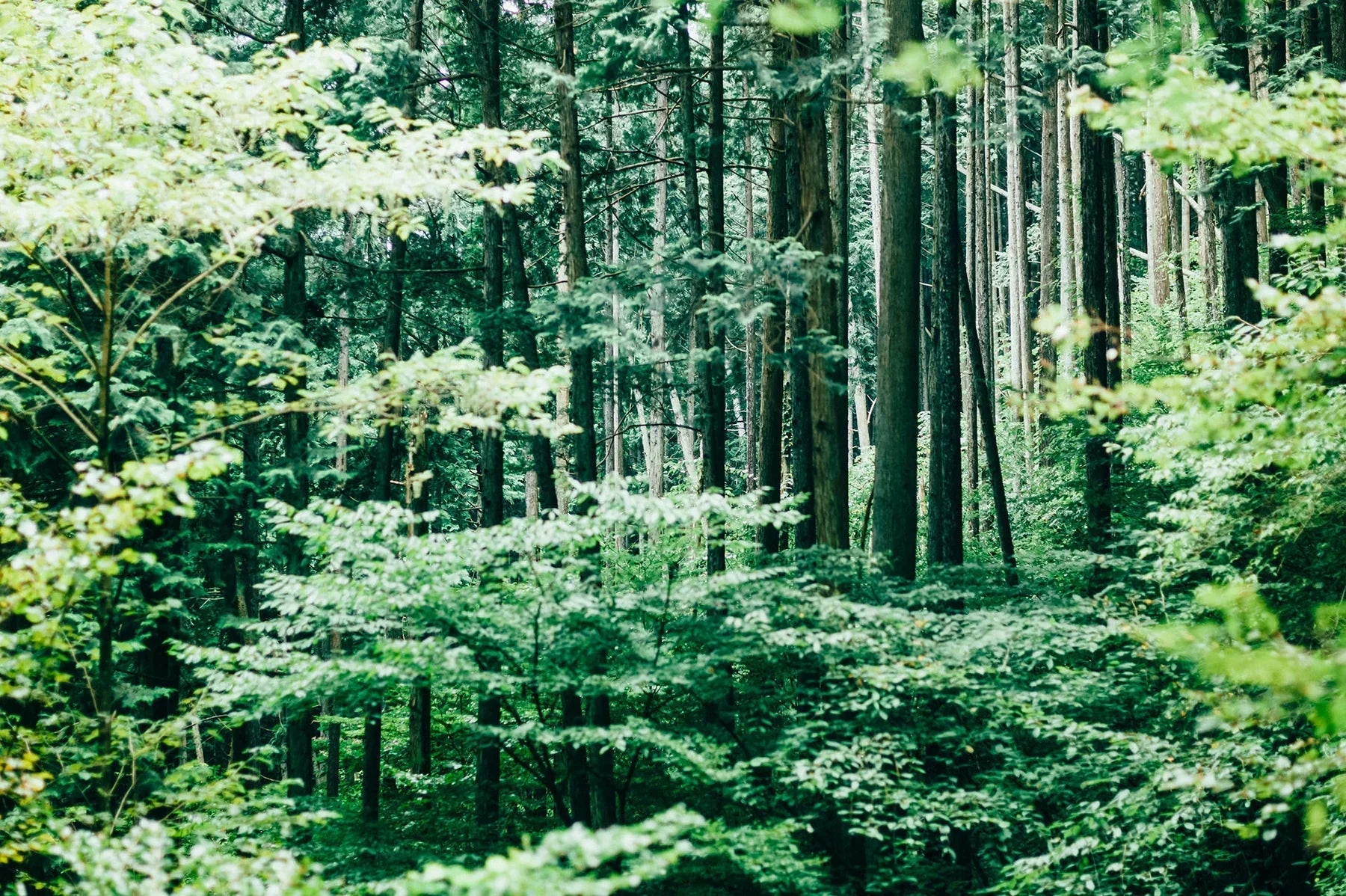
Kumano Brushes Made by Artisans in the "City of Brushes"
Kumano brushes are crafted in Kumano Town, Aki District, Hiroshima Prefecture.
With a population of approximately 23,000, it is said that roughly one in ten people is involved in brush making, making Kumano Japan's leading "brush capital."


Kumano brushes can be broadly categorised into three types: calligraphy brushes, painting brushes, and makeup brushes.
This long-established traditional brush-making industry dates back to the Edo period. In recent years, however, Kumano makeup brushes have gained particular attention for their exceptional quality, earning admiration from leading domestic companies and makeup artists worldwide.
Some of these top-tier brushes can cost hundreds of thousands of yen each due to their high quality. The Kumano makeup brushes available at Standard Products were developed in collaboration with Koyudo, an up-and-coming brush studio known for its innovative craftsmanship.
While Koyudo specialises in traditional calligraphy and painting brushes, the company has also gained popularity for its unconventional product lines, including out-of-bath and shoe care products that incorporate Kumano brush techniques.

When you think of Kumano brushes, you may imagine them being made from animal hair. However, Standard Products' makeup brushes are crafted from upcycled synthetic fibers made from extremely soft polyester material (including recycled PET).
While these materials were chosen for their environmental benefits, the final product rivals the quality of natural animal hair. Standard Products' Kumano brushes can be described as a hybrid of traditional techniques and modern materials.
Kumano brushes are known for being meticulously handcrafted by artisans. However, for this latest product, Koyudo were able to bring it to market by incorporating mechanisation into select steps of the process. By carefully reviewing the raw materials and the optimising manufacturing process, they have achieved greater efficiency while maintaining exceptional quality.
We would like to introduce a part of the world's most advanced brush-making technology that is behind these makeup brushes.
Please Note: Not all of the following processes are used for Standard Products makeup brushes. These steps represent the general manufacturing process for Kumano makeup brushes.


Kumano makeup brushes go through more than 30 production steps, while calligraphy and painting brushes require over 70 steps.
Here are the key stages of making a Kumano makeup brush:
1. Hair Selection
2. Lightweight
3. Yose (Bundling the Hairs)
4. Core holding
5. Unity
6. Metal fittings adhesion
7. Shaft bonding
8. Final Inspection
The processes are explained below.
Among these processes, the step that deserves special mention is "hair selection."

As anyone who has used a Kumano makeup brush would know - they are characterised by their soft, smooth bristles that make you want to touch them forever.
The secret to its smoothness? The hair tips are never cut during the manufacturing process. It may be easier to understand if you imagine uncut fine hair or animal hair.
Unlike brushes where bristles are trimmed to shape, Kumano brushes retain the natural tapered ends of each strand. This is achieved through a delicate hair selection process called "sarae," where thick and thin hairs are removed to create hair tips of uniform thickness.
It is not easy to create strands of uniform thickness without cutting the ends, and it takes years of experience to master this technique.

The left bundle shows the brush before processing, and the right shows it after. The softness of the brush changes significantly depending on whether this step is performed. This is a highly delicate process that cannot be easily replicated by machines.

At first glance, this may seem like the same work process as others, but this is a sight that is unique to Koyudo.
The high quality of Kumano brushes is the result of the careful and meticulous work done by artisans.
However, among the dozens of processes, there are a few steps that do not affect quality even if mechanisation is incorporated. Koyudo has identified steps in the manufacturing process where quality can be ensured even with "semi-mechanisation."


The next steps are bundling, gluing the metal fittings, and gluing the shaft.
This is a process where mechanisation has been incorporated, but of course this is not a step that can be done entirely by a machine, and is still a very delicate process.
The hairs are repeatedly trimmed and inspected, with any excess length or thickness being removed, leaving only the finest tips.



The finishing touches are then applied through a specialised process unique to Koyudo - a trade secret that has a major impact on the final product.
This crucial step plays a vital role in achieving the exceptional quality of Kumano brushes.
And at last, the brush is complete.

Standard Products now offers a selection of Kumano brushes:
- Eyebrow Brush
- Eyeshadow Brush
- Shadow Liner Brush
- Powder Brush
- Foundation Brush
This is an excellent product that we can confidently recommend. We invite you to visit our store and experience the quality of Kumano brushes for yourself.
LATEST STORY

Laundry detergent made using the traditional kettle cooking method
This laundry detergent is made with pure soap, paired with a fabric softener that leaves a natural finish. Our goal was to create a product that strikes the right balance—easy to use, environmental...
Read more
Tenugui dyed using a technique unique to Japan
Sakai City, Osaka Prefecture, is a major production area for tenugui. Takeno Senko is the only company that can make double-sided roll-printed tenugui. Craftsmen carefully dye the textured Japanese...
Read more
Miscellaneous goods made from domestic wood and thinned wood
What image comes to your mind when you hear the word "deforestation"? While often associated with environmental loss, in Japan, sustainable forestry involves the careful use of thinned wood to main...
Read more